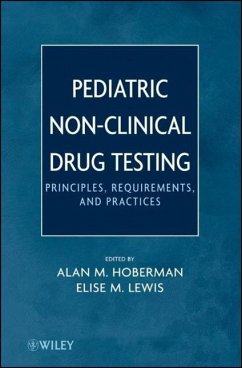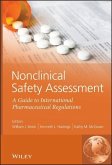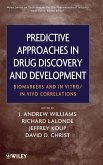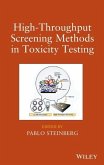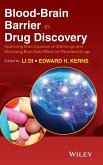Enables readers to successfully perform non-clinical drug testing, meeting international requirements
Although the non-clinical and clinical testing needs of drugs for pediatric populations have been discussed and debated for more than forty years, many ethical, political, and practical issues remain unresolved, making pediatric drug testing and labeling a challenge for pharmaceutical and toxicology professionals. Written and edited by a team of leading international experts, this book explains both the importance and the practice of non-clinical pediatric drug testing. Moreover, it guides readers through the complex set of international rules and regulations governing the practice today.
Following the authors' clear advice, readers will be able to meet FDA guidelines for non-clinical pediatric drug testing, from initial study design to submission of results for approval. Moreover, the authors describe key differences between the FDA guidelines and European Medicines Agency (EMA) legislation, enabling readers to devise and conduct studies, analyze the results, and then compile appropriate information for submission to both agencies.
Pediatric Non-Clinical Drug Testing offers clear guidance for managing the key challenges of non-clinical testing models, helping readers overcome the difficulties associated with:
Lack of fully comparable models
Inadequate historical experience
Specific needs and effects associated with testing animals
Practical problems using the clinical route of exposure in animal models
The book's appendix features a sample juvenile toxicity testing protocol that readers can use as a template for their own experimental designs.
In addition to toxicologists and pharmacokineticists, this book is recommended for drug regulators who need to develop and enforce drug testing standards to protect children. It is also recommended as a textbook for toxicology and pediatric medicine courses.
Although the non-clinical and clinical testing needs of drugs for pediatric populations have been discussed and debated for more than forty years, many ethical, political, and practical issues remain unresolved, making pediatric drug testing and labeling a challenge for pharmaceutical and toxicology professionals. Written and edited by a team of leading international experts, this book explains both the importance and the practice of non-clinical pediatric drug testing. Moreover, it guides readers through the complex set of international rules and regulations governing the practice today.
Following the authors' clear advice, readers will be able to meet FDA guidelines for non-clinical pediatric drug testing, from initial study design to submission of results for approval. Moreover, the authors describe key differences between the FDA guidelines and European Medicines Agency (EMA) legislation, enabling readers to devise and conduct studies, analyze the results, and then compile appropriate information for submission to both agencies.
Pediatric Non-Clinical Drug Testing offers clear guidance for managing the key challenges of non-clinical testing models, helping readers overcome the difficulties associated with:
Lack of fully comparable models
Inadequate historical experience
Specific needs and effects associated with testing animals
Practical problems using the clinical route of exposure in animal models
The book's appendix features a sample juvenile toxicity testing protocol that readers can use as a template for their own experimental designs.
In addition to toxicologists and pharmacokineticists, this book is recommended for drug regulators who need to develop and enforce drug testing standards to protect children. It is also recommended as a textbook for toxicology and pediatric medicine courses.

